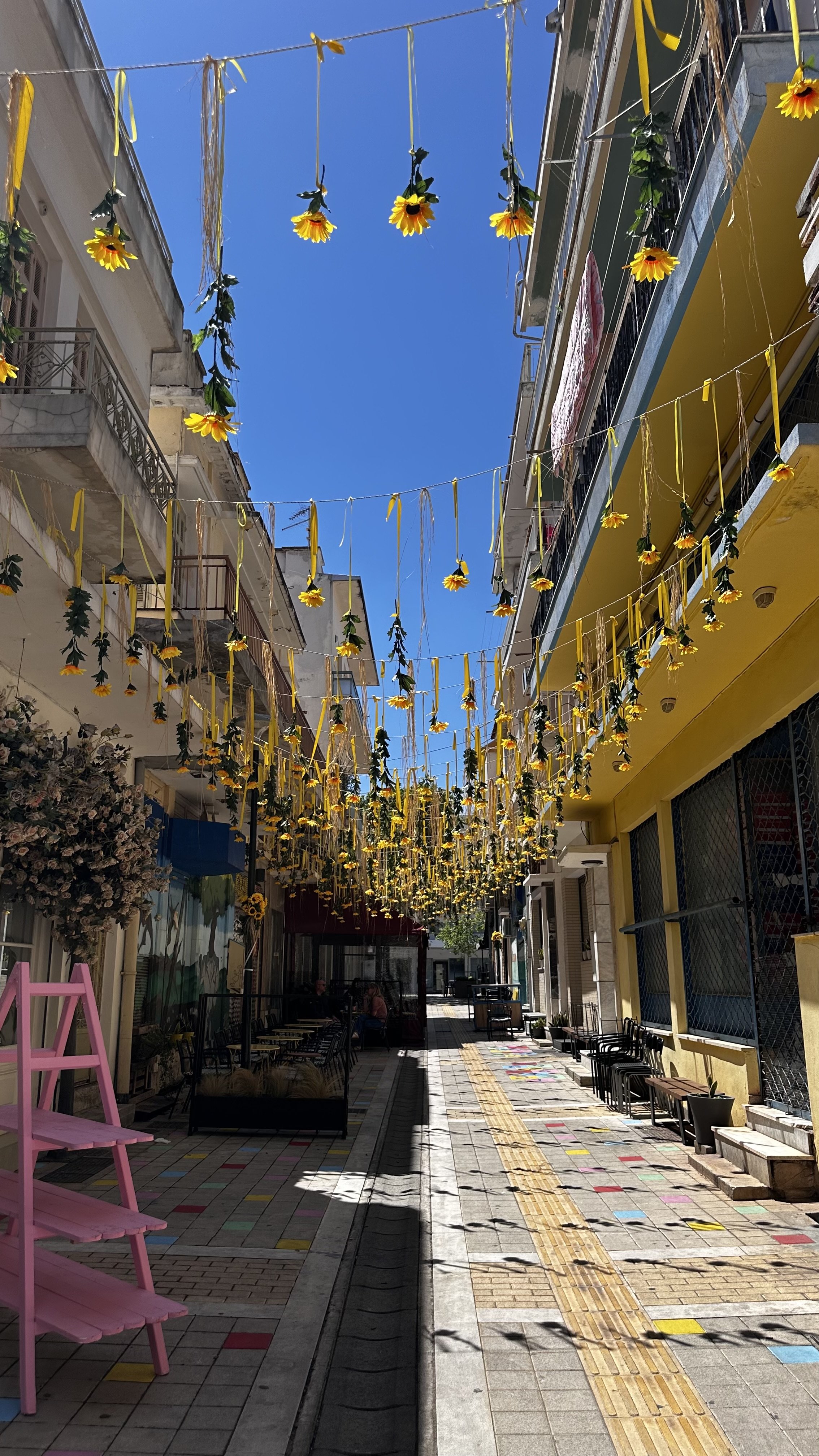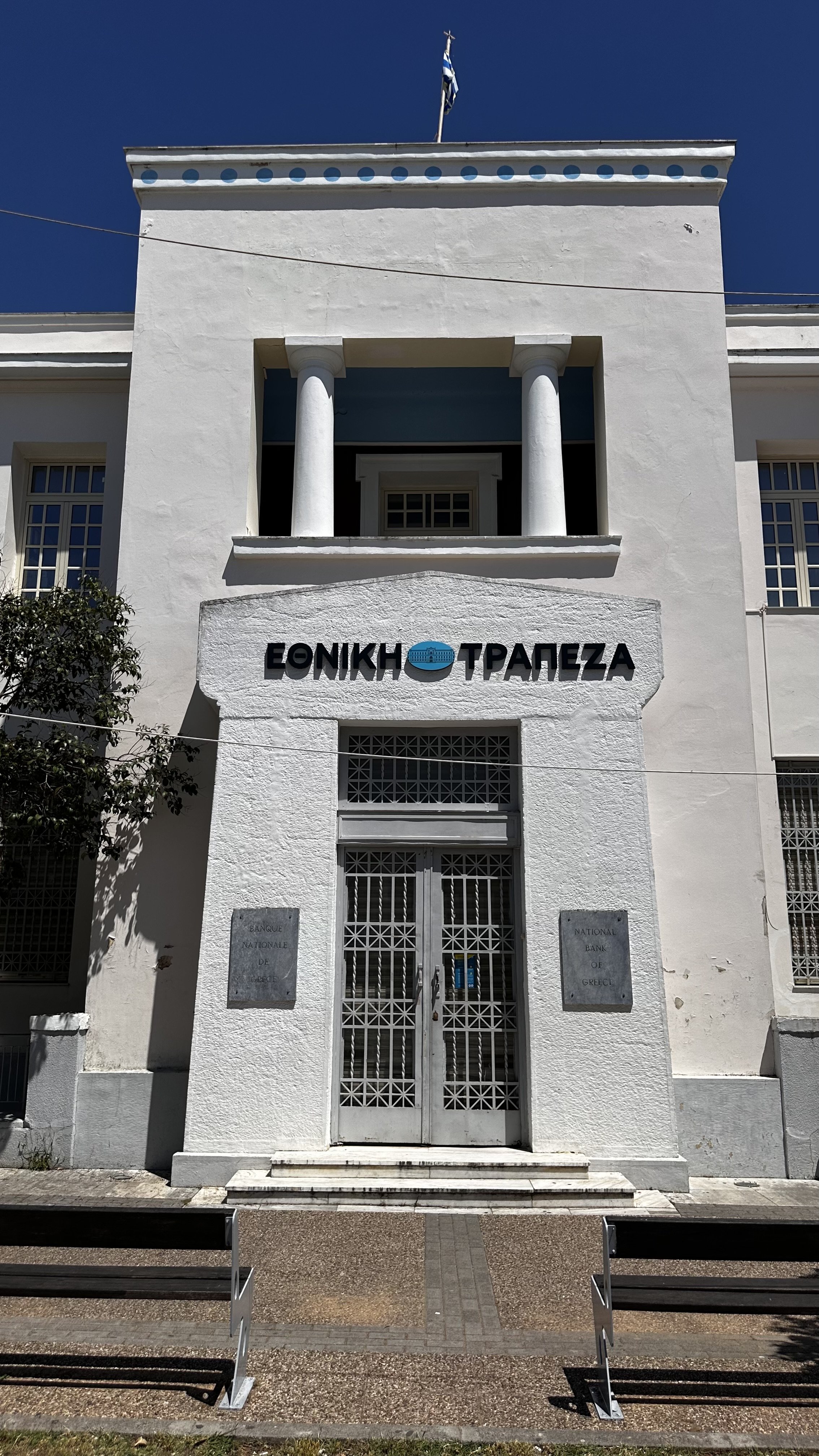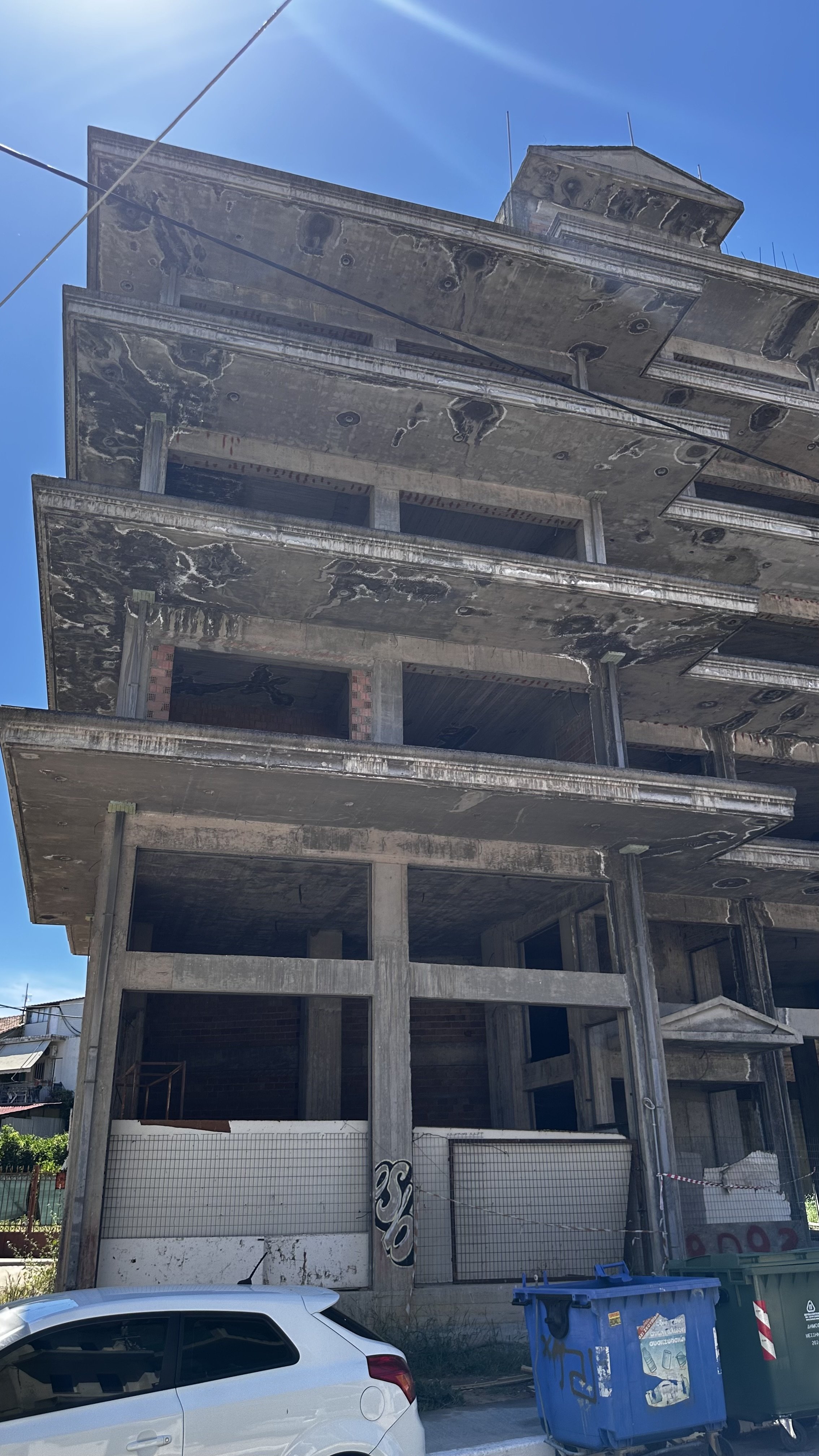Messini: Between Sunflowers and Crumbling Walls
A brief stop in Messini reveals a town wrestling with itself—between decay and charm, graffiti and sunflowers, vacant squares and small human moments.
Messini doesn’t exactly roll out a red carpet—but it does offer something else: contrast. A place trying hard not to fall apart while pretending it hasn’t already. Faded neoclassical façades melt under the sun, graffiti bleeds across collapsing doorframes, and a wide marble square gleams with empty ambition. Around the corner, a father runs after his barefoot son, dodging pigeons and kicking a fluorescent football toward the old clock tower.
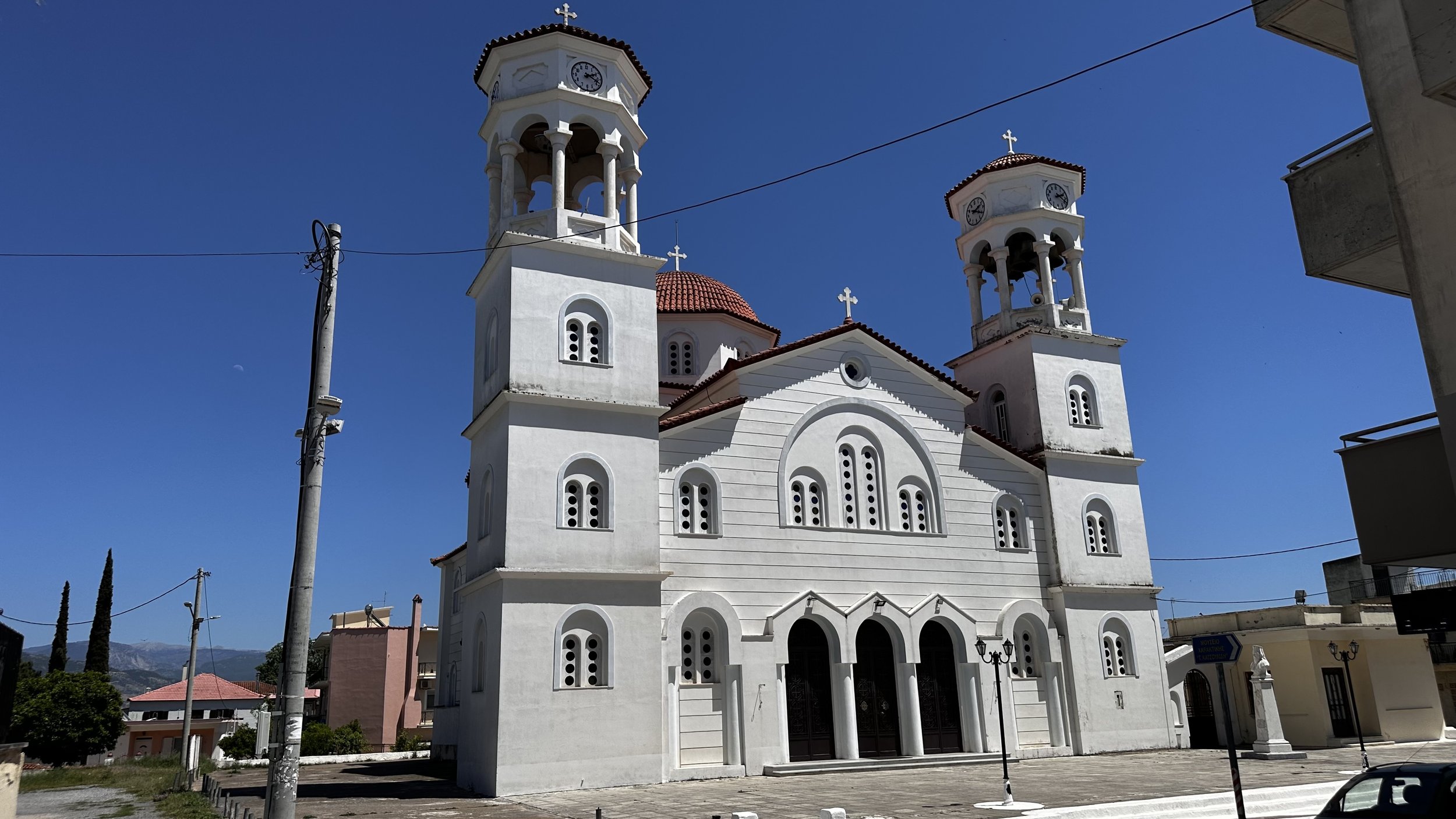
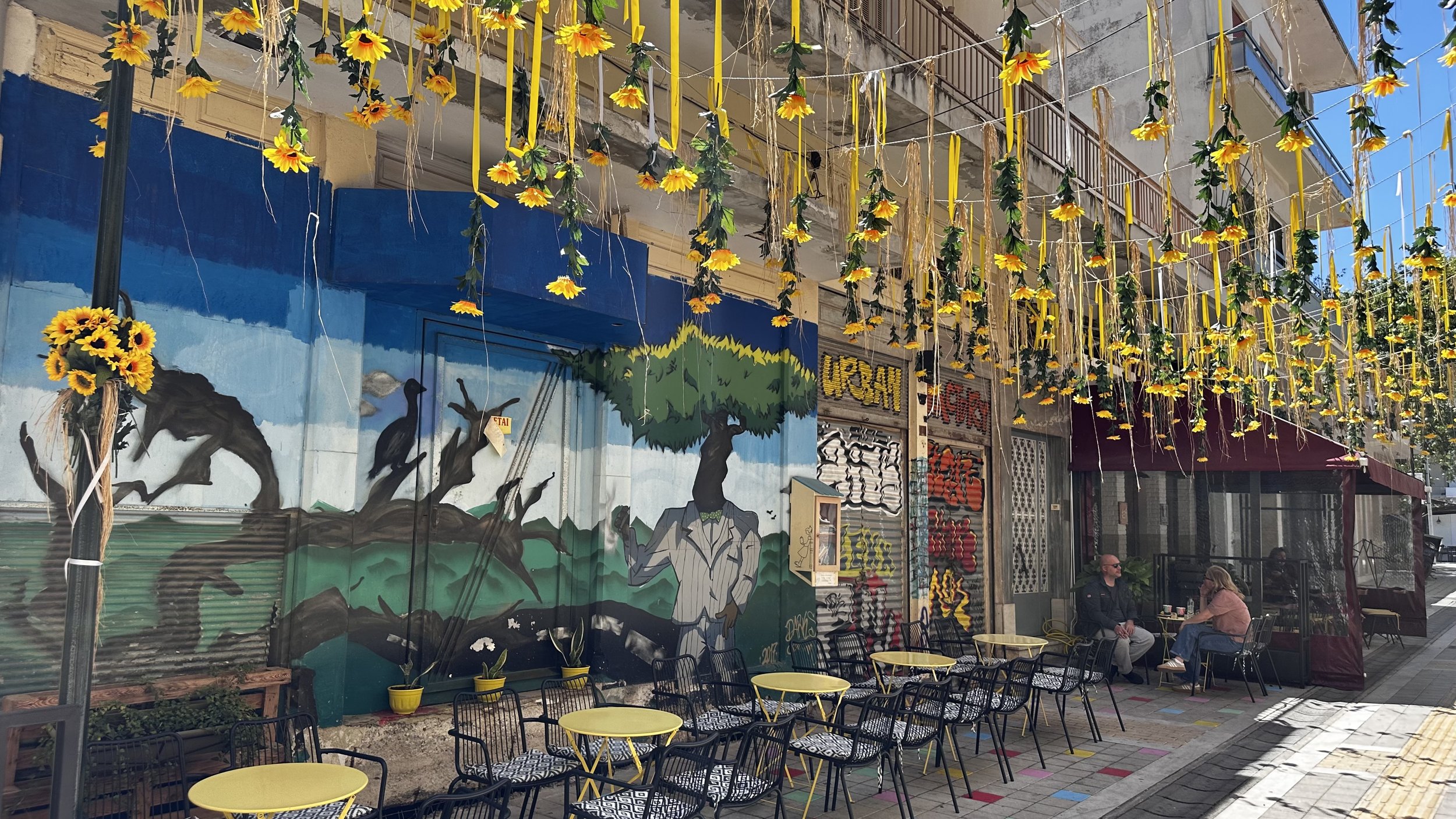
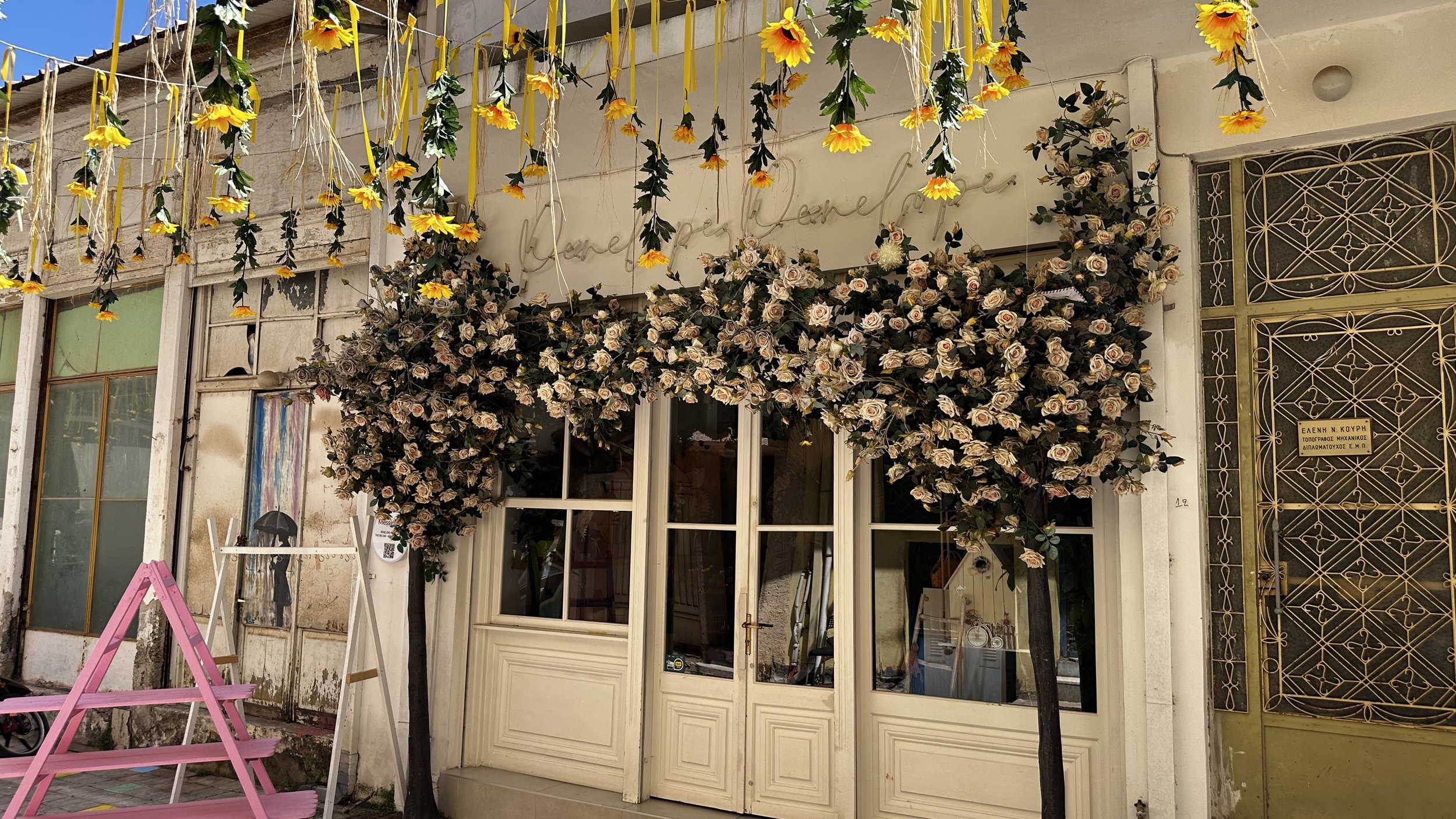
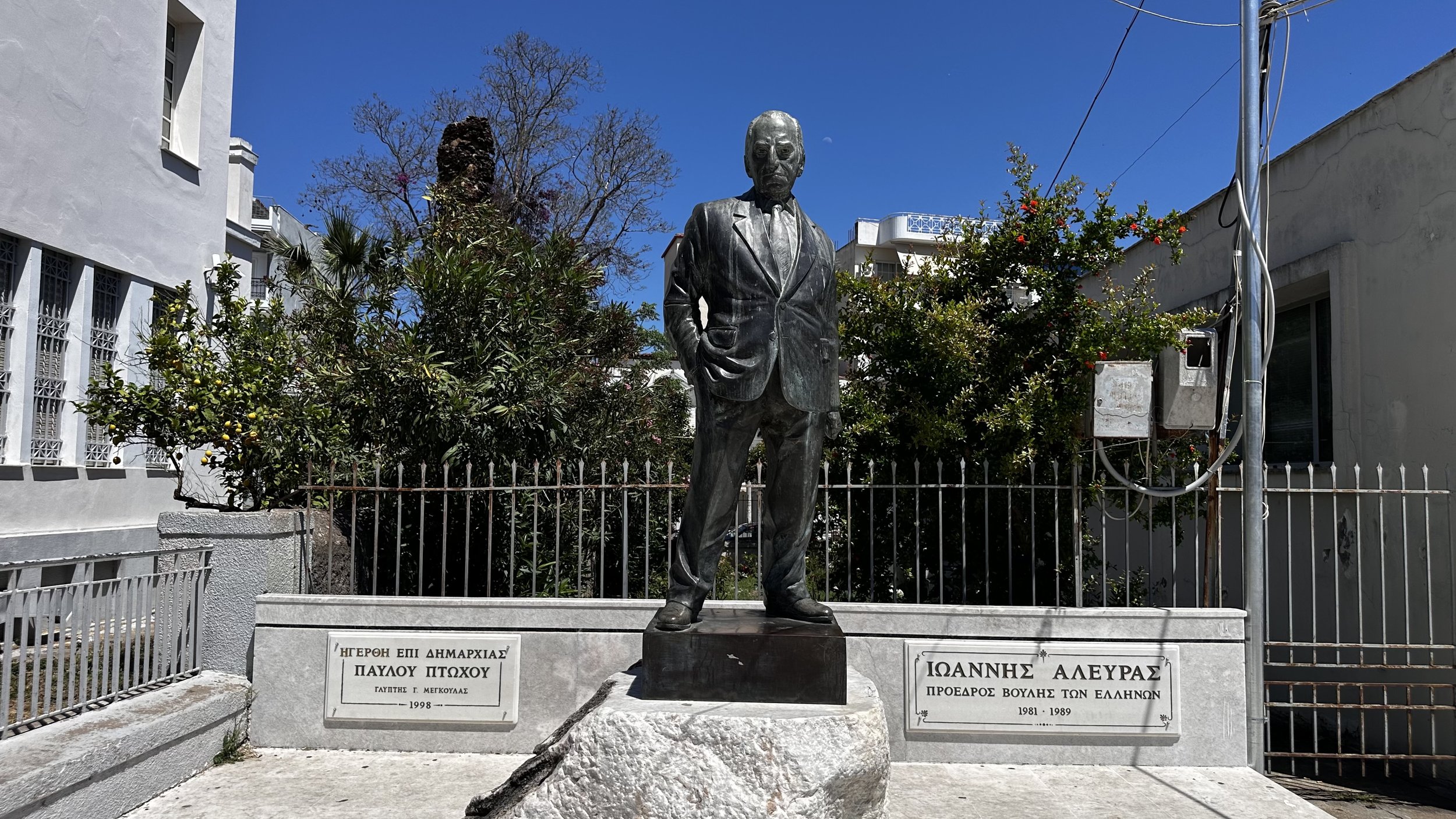
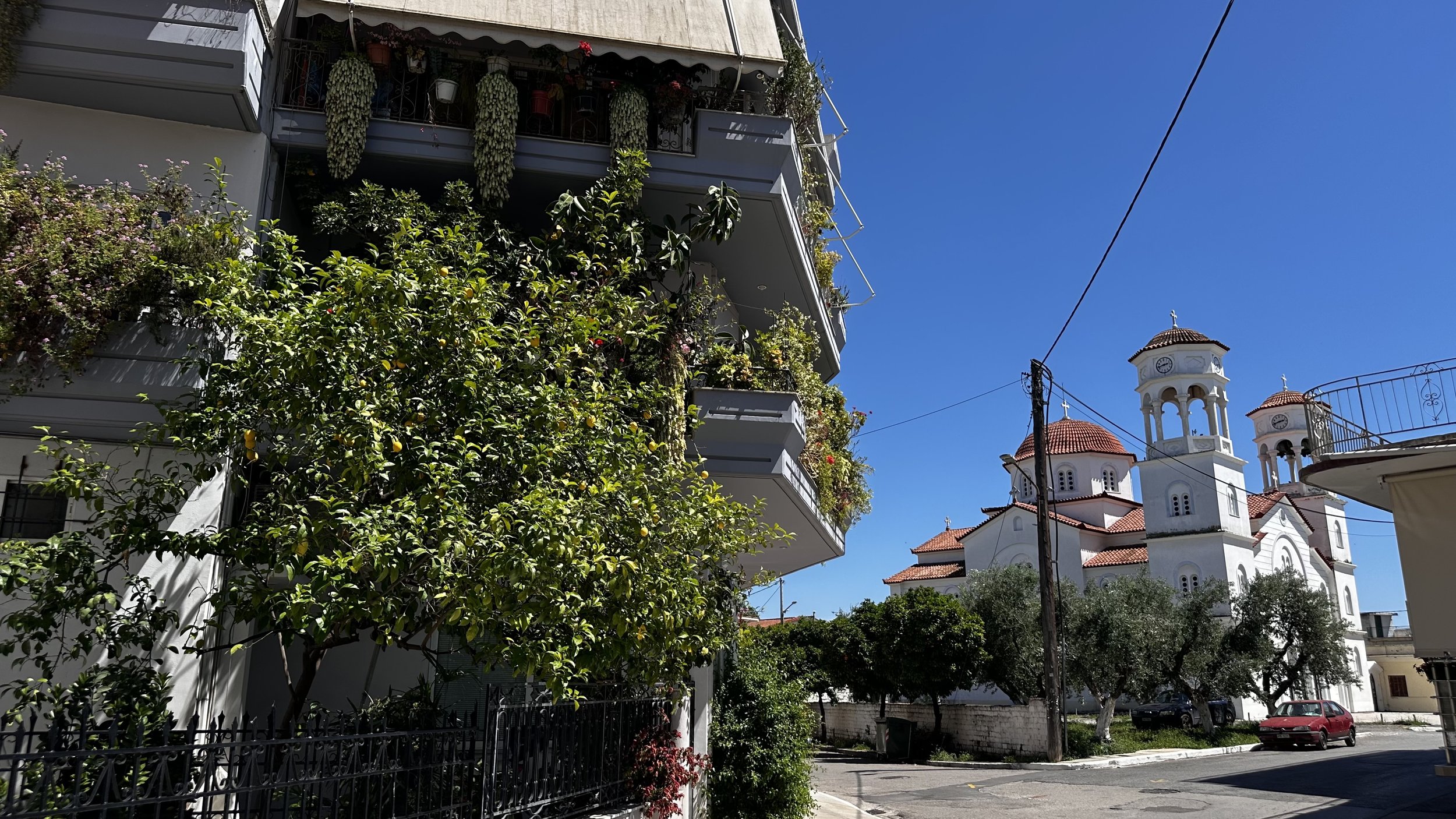

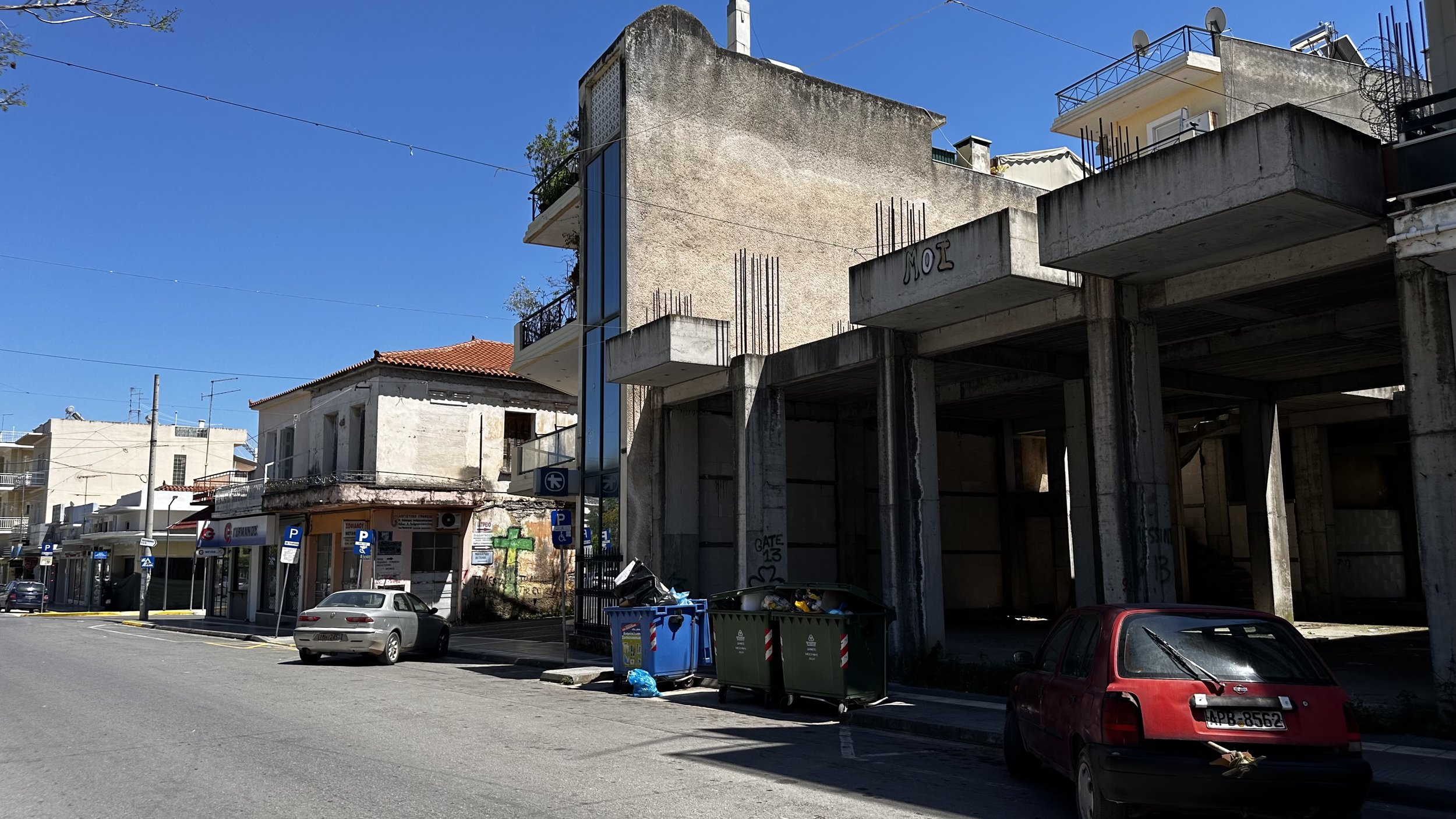
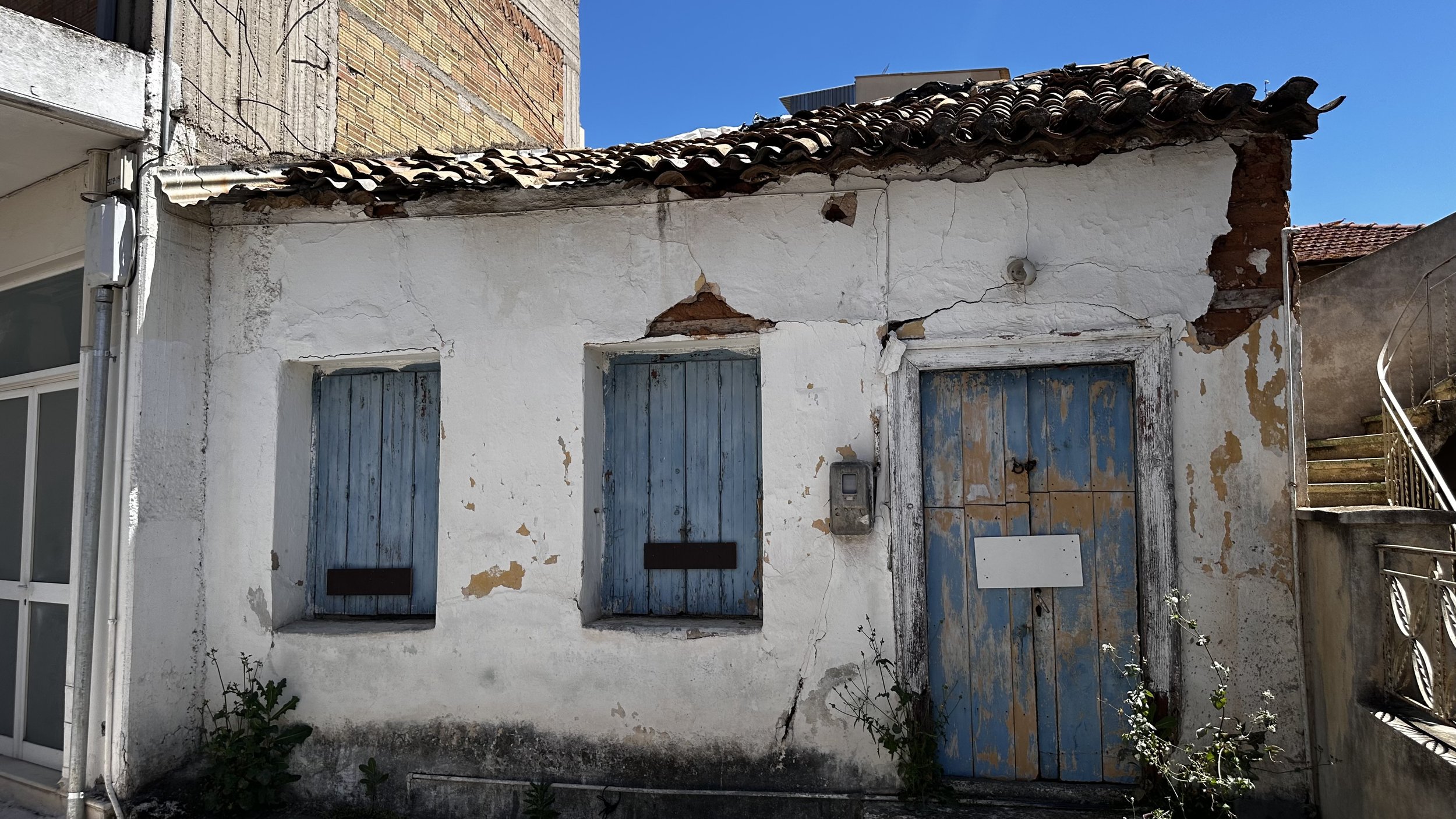
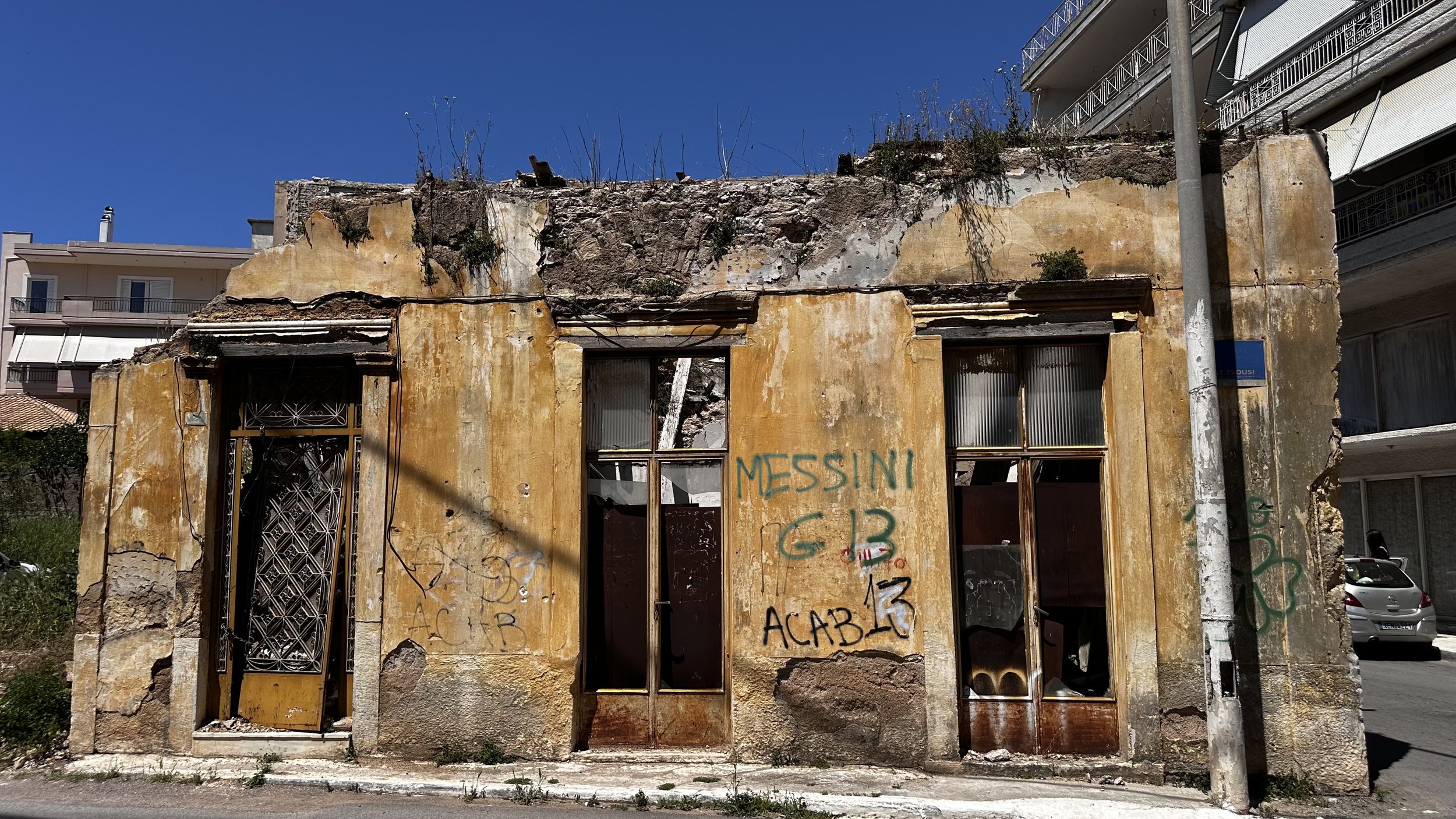

There’s life here—but it’s unevenly distributed. A back alley explodes in sunflower garlands and café tables, absurdly cheerful. Around it: shuttered shops, rusted balconies, paint stripped to the bone. It’s not picturesque, not exactly—but compelling. Like a town caught whispering to itself between what it was and what it might still become.
Messini is one of Greece’s oldest continuously inhabited areas. Its ancient counterpart, Ancient Messene, was a powerful city-state founded in 369 BC after the liberation of Messenia from Spartan rule. The modern town, however, developed separately from the archaeological site and today serves mostly as a local hub with modest tourism and a strong agricultural base—particularly olives and figs. Despite its name echoing ancient grandeur, present-day Messini is a patchwork of decayed postwar urbanism, half-hearted revitalisation, and everyday life quietly unfolding in sun-drenched plazas and dusty alleyways.
Out There > Motorhome Trip Spring 2025 Western Balkans and Greece > Messini, Greece

